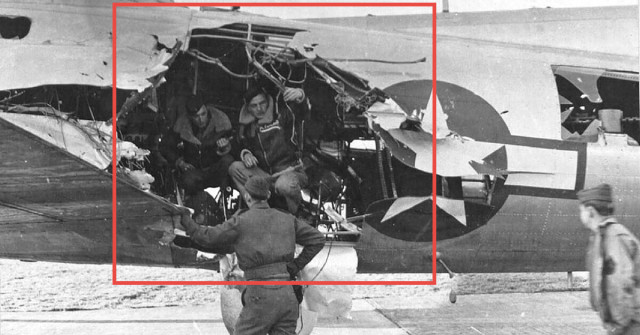
During WWII 12,732 B-17’s were produced between 1935 and May 1945. Of these 4,735 were lost in combat, a staggering 37%.
Each image could and should be an article in itself but wherever possible we’ve added some descriptive text.
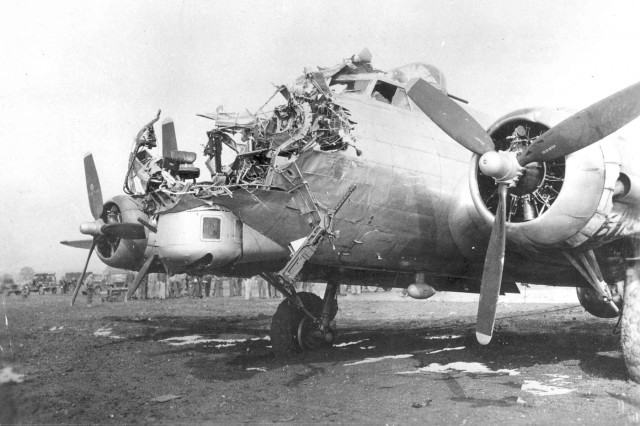 B-17G 43-38172 of the 8th AF 398th BG 601st BS which was damaged on a bombing mission over Cologne, Germany, on 15 October 1944; the bombardier was killed. [via]
B-17G 43-38172 of the 8th AF 398th BG 601st BS which was damaged on a bombing mission over Cologne, Germany, on 15 October 1944; the bombardier was killed. [via]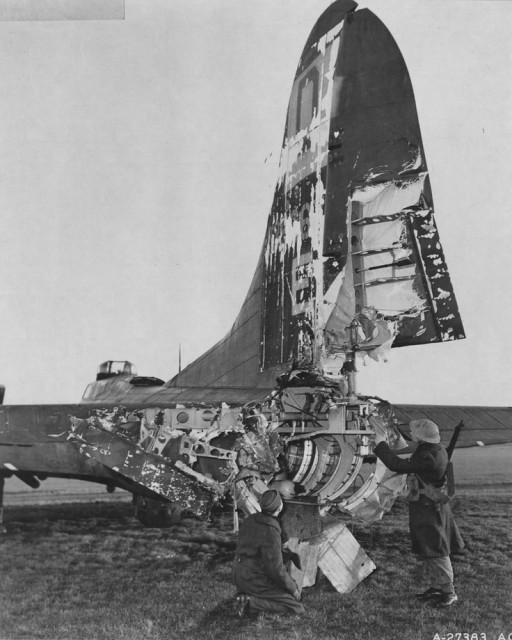 A
B-17 of the 100th Bomber Squadron of the USAAF rests in an English
airfield after being severely damaged by flack over Frankfurt. She was
eventually repaired and returned to normal duty, 1944. [via]
A
B-17 of the 100th Bomber Squadron of the USAAF rests in an English
airfield after being severely damaged by flack over Frankfurt. She was
eventually repaired and returned to normal duty, 1944. [via]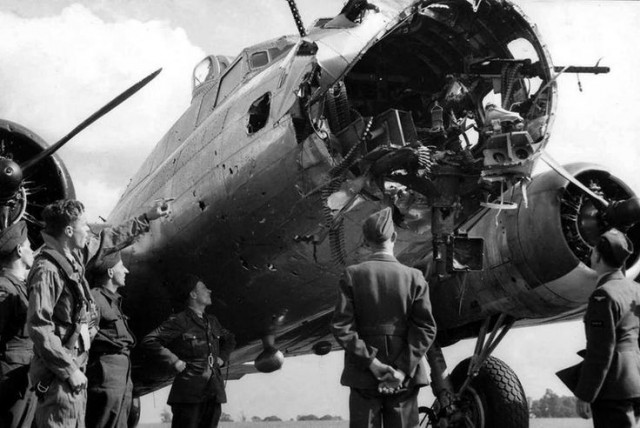
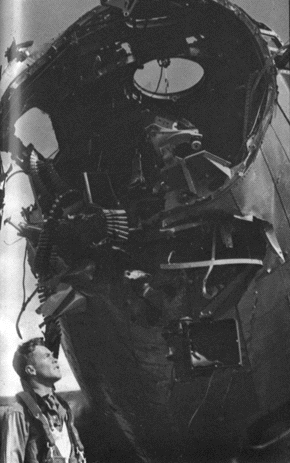 Two shots from a B-17 from the 379th Bomb Group with most of the nose missing [via]
Two shots from a B-17 from the 379th Bomb Group with most of the nose missing [via]On the second one it seems the Pilot is looking up at the damage [via]
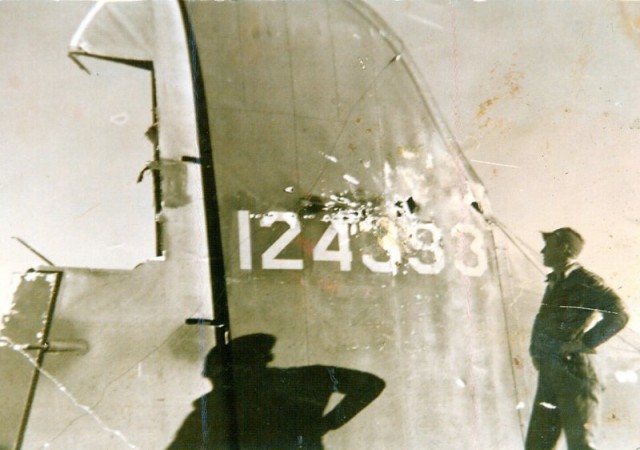 B-17 Eager Beaver Tail Damage (C. 1942). Serial No. 124393 full of holes.
B-17 Eager Beaver Tail Damage (C. 1942). Serial No. 124393 full of holes.The entry in the pilots diary, dated Feb 18, 1943, says, “New waist gunner shot hell out of tail today. Ship out for a week.” For the full story and all entries from dad’s diary, see my book on Amazon.com “A WWII Journal” by Randy Graham. [via]
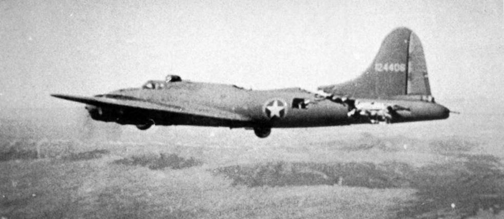
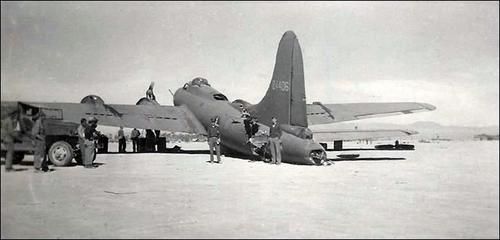 Boeing
B-17F-5-BO (S/N 41-24406) “All American III” of the 97th Bomb Group,
414th Bomb Squadron, in flight after a collision with an Me-109 over
Tunis. The aircraft was able to land safely on her home base in Biskra,
Algeria. [via]
Boeing
B-17F-5-BO (S/N 41-24406) “All American III” of the 97th Bomb Group,
414th Bomb Squadron, in flight after a collision with an Me-109 over
Tunis. The aircraft was able to land safely on her home base in Biskra,
Algeria. [via]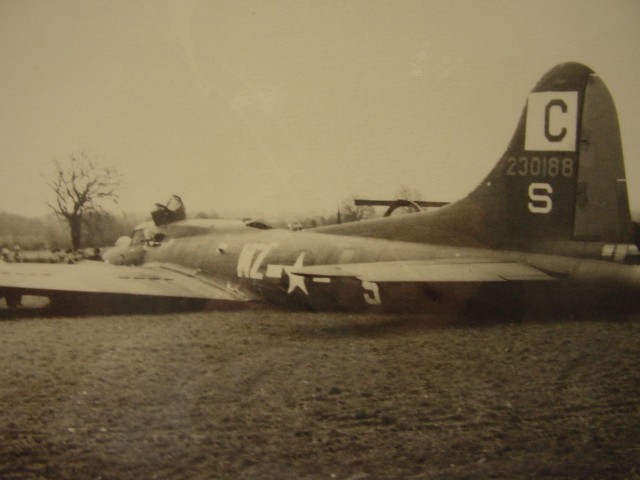 4
February, 1944 Boeing B-17F-90-BO Flying Fortress, 42-30188,
“Temptation” of the 413th Bomb Squadron, 96th Bomb Group, during takeoff
for a Frankfort mission, suffers runaways on Nos. 1 and 2 propellers.
Lt. Joseph Meacham attempts landing at near-by as yet unfinished base,
but crash lands at East Shropham, Norfolk, All eleven crew survive but
the aircraft is damaged beyond repair and is written off, fit only for
parts salvage. [via]
4
February, 1944 Boeing B-17F-90-BO Flying Fortress, 42-30188,
“Temptation” of the 413th Bomb Squadron, 96th Bomb Group, during takeoff
for a Frankfort mission, suffers runaways on Nos. 1 and 2 propellers.
Lt. Joseph Meacham attempts landing at near-by as yet unfinished base,
but crash lands at East Shropham, Norfolk, All eleven crew survive but
the aircraft is damaged beyond repair and is written off, fit only for
parts salvage. [via]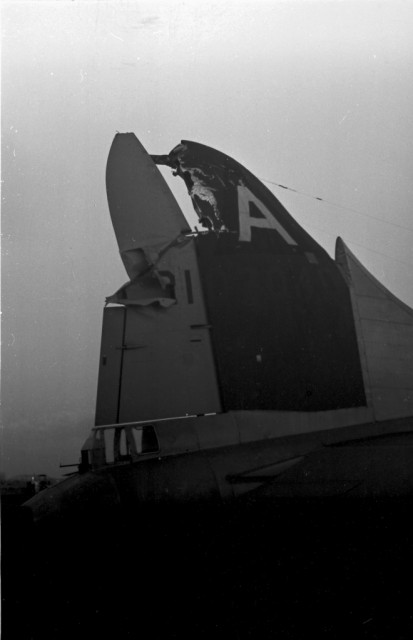 This is 42-107040, Shirley Jean of the 324th Bomb Squadron, 91st Bomb Group. [via]
This is 42-107040, Shirley Jean of the 324th Bomb Squadron, 91st Bomb Group. [via]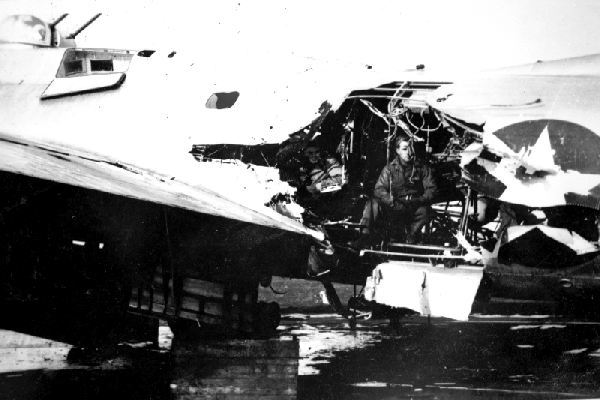 6th
November 44 B17G Rackheath – Close-up view showing the enormous hole
from the flak-damaged B17 of the 91st BG that returned safely to
Rackheath. [Via]
6th
November 44 B17G Rackheath – Close-up view showing the enormous hole
from the flak-damaged B17 of the 91st BG that returned safely to
Rackheath. [Via]Continued from Page 1
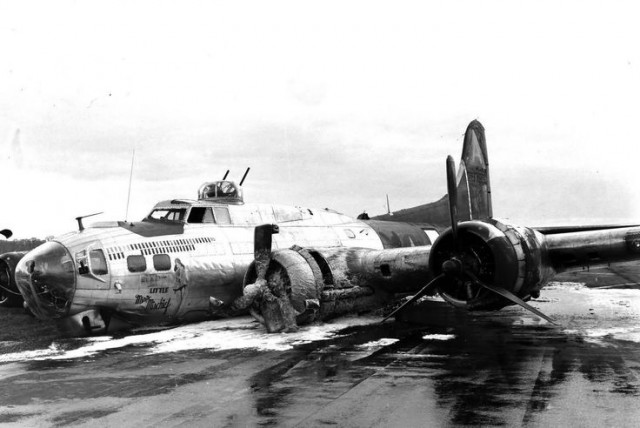 B-17 Little Miss Mischief after an emergency landing in Bassingbourn [via]
B-17 Little Miss Mischief after an emergency landing in Bassingbourn [via]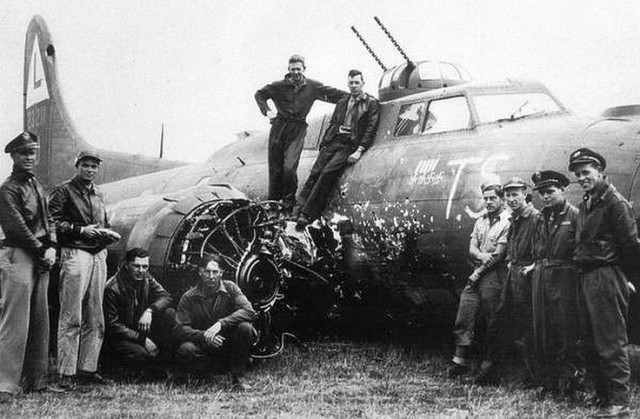 B-17 damaged in collision with Fw190 in head-on attack [via]
B-17 damaged in collision with Fw190 in head-on attack [via]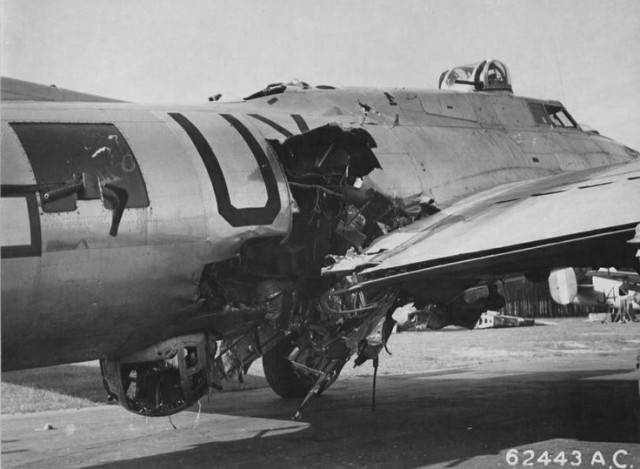 Waist
gunner killed, ball turret gunner killed, radio operator blown out of
the airplane completely, but this Fort still managed to get home and
land without cracking in half. [via]
Waist
gunner killed, ball turret gunner killed, radio operator blown out of
the airplane completely, but this Fort still managed to get home and
land without cracking in half. [via]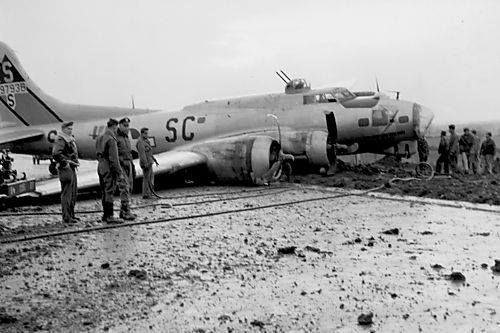 401st Bomb Group B-17G Belly Landed in England, October 29 1944
401st Bomb Group B-17G Belly Landed in England, October 29 1944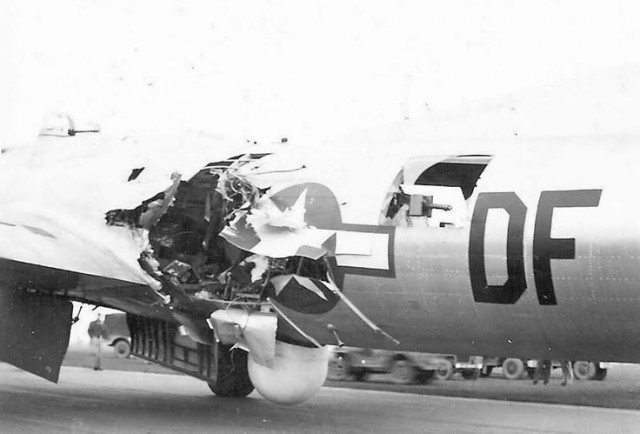 B-17 91 Bomb Group 324 Bomb squadron heavy flak damage [via]
B-17 91 Bomb Group 324 Bomb squadron heavy flak damage [via]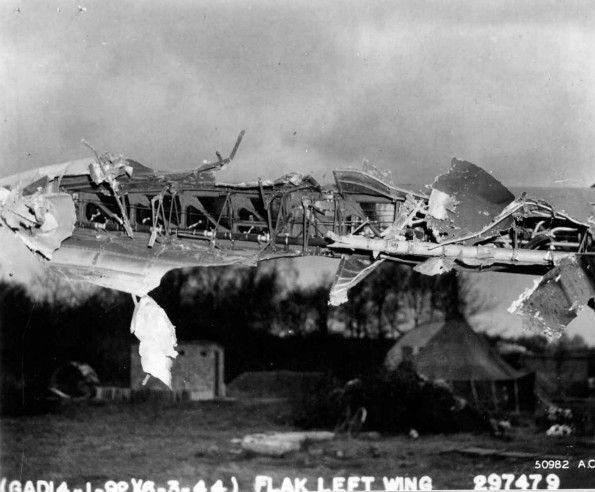 The
“Belle of Liberty” Lockheed/Vega B-17G-15-VE s/n 42-97479 327th BS,
92nd BG, US 8th AF. Damaged on the 6 March 1944 mission to bomb the
ball-bearing plant at Erkner, in the outskirts of Berlin. This aircraft
was repaired and went back into service. [via]
The
“Belle of Liberty” Lockheed/Vega B-17G-15-VE s/n 42-97479 327th BS,
92nd BG, US 8th AF. Damaged on the 6 March 1944 mission to bomb the
ball-bearing plant at Erkner, in the outskirts of Berlin. This aircraft
was repaired and went back into service. [via]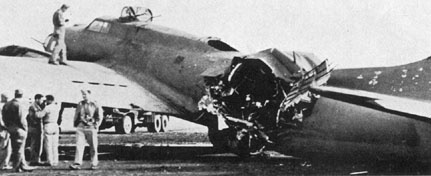 This
B-17 took a direct flak hit in the waist over Debrecen, Hungary which
killed three crewmen and wounded two others. Threatening to come apart
in mid-air the pilot nursed it home to a safe landing, but the weakened
fuselage collapsed on touchdown. [via]
This
B-17 took a direct flak hit in the waist over Debrecen, Hungary which
killed three crewmen and wounded two others. Threatening to come apart
in mid-air the pilot nursed it home to a safe landing, but the weakened
fuselage collapsed on touchdown. [via] The only information that came with this photograph was B-17F – 97 Bomb group
The only information that came with this photograph was B-17F – 97 Bomb group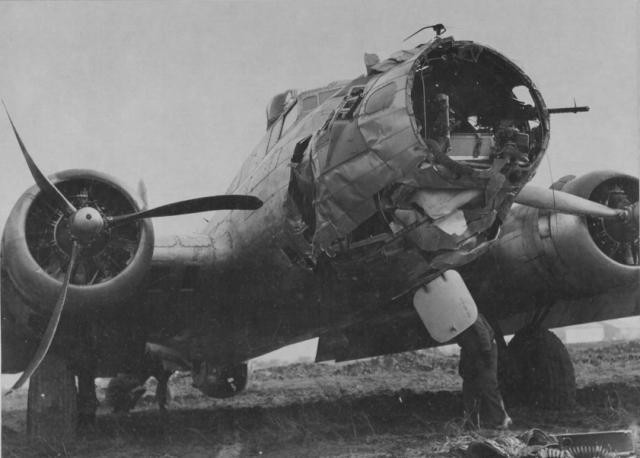
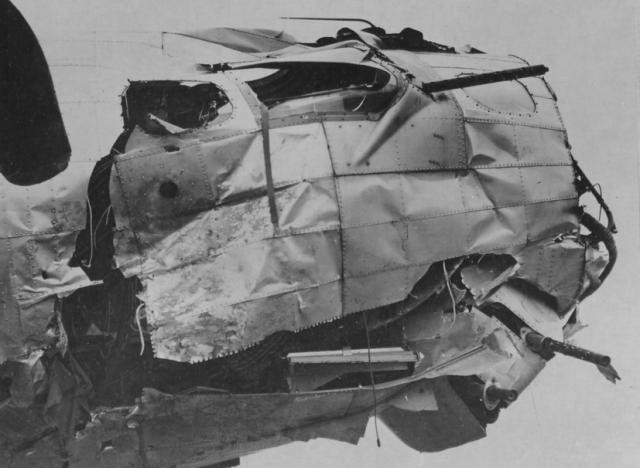 This
B-17G-75-BO (s/n 43-38071) landed at Brustem Airfield in Belgium on
March 17,1945 after a mid-air collision with another B-17G (s/n
43-38046). Both aircraft were from the 490th Bomb Group, 8th Air Force.
This
B-17G-75-BO (s/n 43-38071) landed at Brustem Airfield in Belgium on
March 17,1945 after a mid-air collision with another B-17G (s/n
43-38046). Both aircraft were from the 490th Bomb Group, 8th Air Force.This plane took off with its standard crew of 10 but landed with 11 aboard…one dead. The body of radio operator (Sgt. George Devlin) from the other B-17 was somehow thrown into the nose of this aircraft during the collision. [Via / Via]
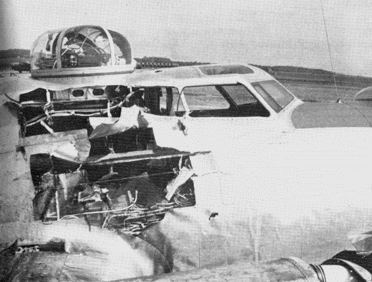 A ground launched rocket missile caused this damage to 388BG’s “Panhandle”
during an attack on a V-weapon site, June 15, 1944. The missile struck
number 3 engine, ricocheted into the fuselage and exploded, leaving Sgt
Biggs, the top turret gunner, with nasty burns.
A ground launched rocket missile caused this damage to 388BG’s “Panhandle”
during an attack on a V-weapon site, June 15, 1944. The missile struck
number 3 engine, ricocheted into the fuselage and exploded, leaving Sgt
Biggs, the top turret gunner, with nasty burns.Despite extensive damage to various control lines Lt McFarlane brought the bomber down safely at Manston.[Via]

Δεν υπάρχουν σχόλια:
Δημοσίευση σχολίου